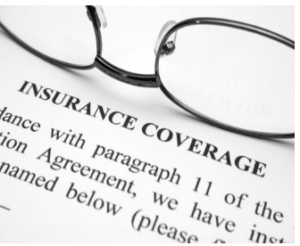Long term disability insurance is something that is not often discussed when the topic of insurance coverage is concerned. This isn’t because people are neglecting this kind of insurance, but because there are a so many types of coverage that sometimes people don’t know where to begin. This article will explore just what long term disability is and what you need to know about it. Understanding this kind of insurance on a basic level could at least give you a heads up on things to consider should you think of getting this for yourself or for a loved one.
Do remember however that if you do want to explore long term disability insurance policies, consider how important it is to consult a legal professional such as the ones from this site or a financial professional about what these insurances cover and how useful they are for your particular circumstance.
Insure.com explains that while the odds of a person getting a disability is close to none, there’s still a chance that a quarter of today’s young adults will gain a disability before they actually retire. It’s important to remember that the average absence due to long-term disability may take almost three years, and it’s a dangerous thought to consider if you don’t have any means of a steady income.
Having a disability can make you stop having the ability to earn money for yourself and others, and while savings can help you get by for a few months, it will eventually run out. Conditions such as connective tissue orders, musculoskeletal disorders, and pain in parts of the body such as the joints, the neck and back, and tendons and muscles, were the leading reasons in 2013 for cases of long-term disability. This means a long-term disability insurance might go a long way should this happen to you.
Long Term Disability: The Basics
It’s important to remember that a long-term disability coverage is capable of filling out spots a short-term disability insurance is incapable of covering. The latter usually has benefits that expire after a quarter to half a year, and the former can pay a percentage of your supposed salary depending on the kind of insurance you have.
- For instance, some policies can pay out for as long as you’re not 65.
- Other policies also have premiums that can be paid with after-tax dollars, which makes disability benefits free of taxes. Meanwhile, if employers pay for your disability insurance policy, then chances are your income will be paying for your benefits.
What You Need To Know
It’s important to get a general idea as to how long-term disability coverage can help you, as you can at least get a brief notion as to what to expect from the concept. Interestingly, a lot of disability insurers actually tend to work with employers in order to help you get back to work. This works both ways, as the employer can get to have an employee back, and the insurers will have less money to pay for.
- Chances are, your disability insurer may label you as “partially disabled.” This means you’re someone who can work but in a kind of livelihood that pays less than your intended or previous job. Full disability benefits usually kick in if you earn less than 20-percent of your previous income.
- Some insurers also offer a dependent care reimbursement benefits. This grants the employee some reimbursement for expenses such as child care when a spouse has to go back to work.
- Should you start receiving benefits while disabled, you most likely don’t have to pay for the premiums. This is because “waiver of premium” sections exist in policies that won’t have you pay premiums if your disability lasts for more than three months.
- You can also buy individual long-term disability insurance, especially if your employer doesn’t offer a disability insurance for a group, or if the group policy isn’t offering good enough coverage. These solo versions of insurance can be bought from planners and other agents.
- These policies tend to be “guaranteed renewable” or “non-cancellable.” The latter is a good option for some, as this means the insurer is incapable of cancelling the coverage or even raising the premiums you have to pay. Meanwhile, guaranteed renewable policies can’t cancel the coverage for as long as they pay for the premium, but the insurance provider could however raise their rates based on group-based insurers, or based on other factors.
Conclusion
Long term disability insurance is just one of the many kinds of insurance coverages accessible to you when you explore your options. The above information has hopefully opened up just what this insurance is, and how it can potentially aid you in the future. Like other insurance coverages, long term disability insurance and what you need to know of it doesn’t necessarily mean it’s something you should immediately take. However, knowing what this option does and how it can benefit you are things worth considering should you find yourself contemplating about getting it.
——————————————————————————————————————-
Andrew Nickleson – Andrew is a passionate writer, writing about diabilities and the law. He has written about many subjects aimed to help those who have questions unanswered. In his spare time he enjoys working on volunteering for those less fortunate.




